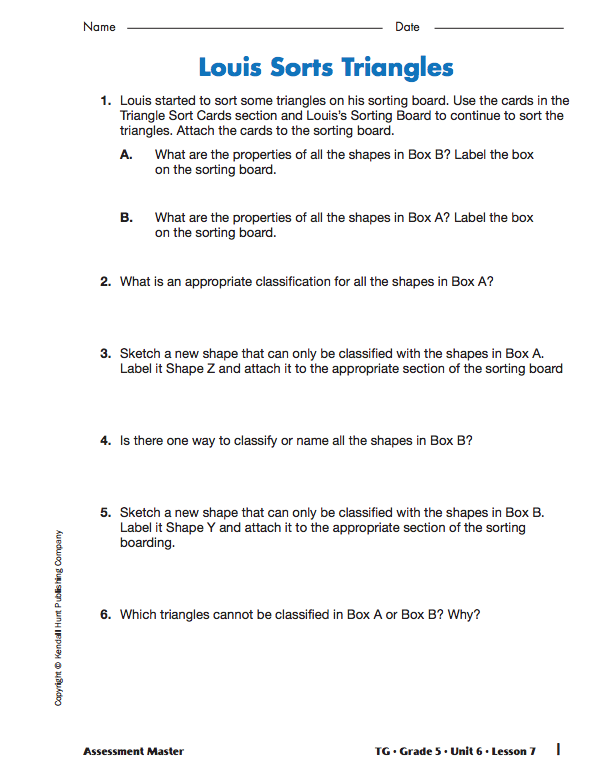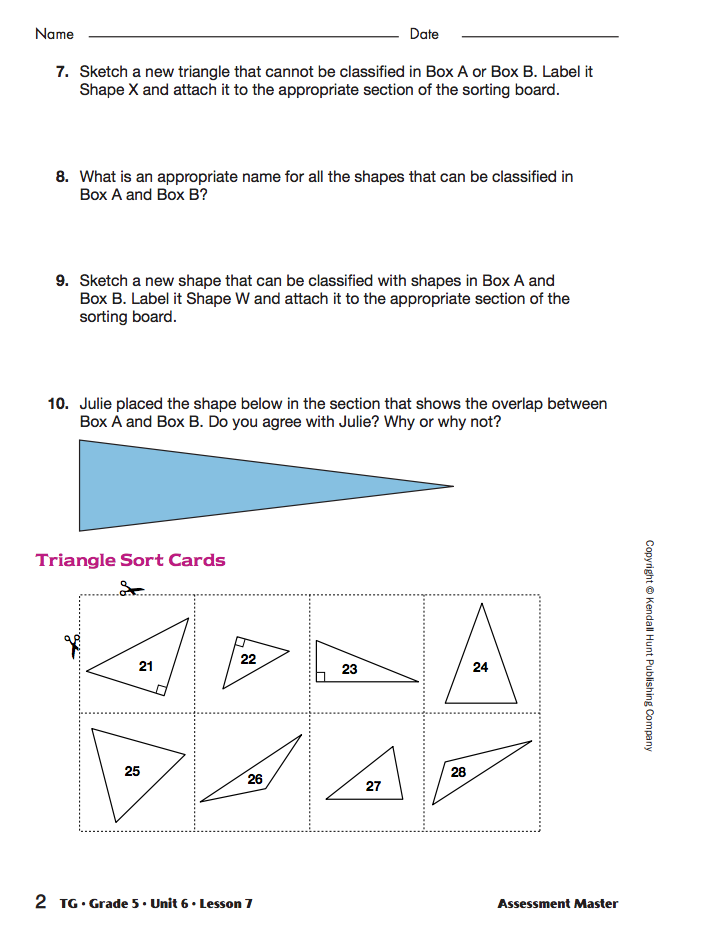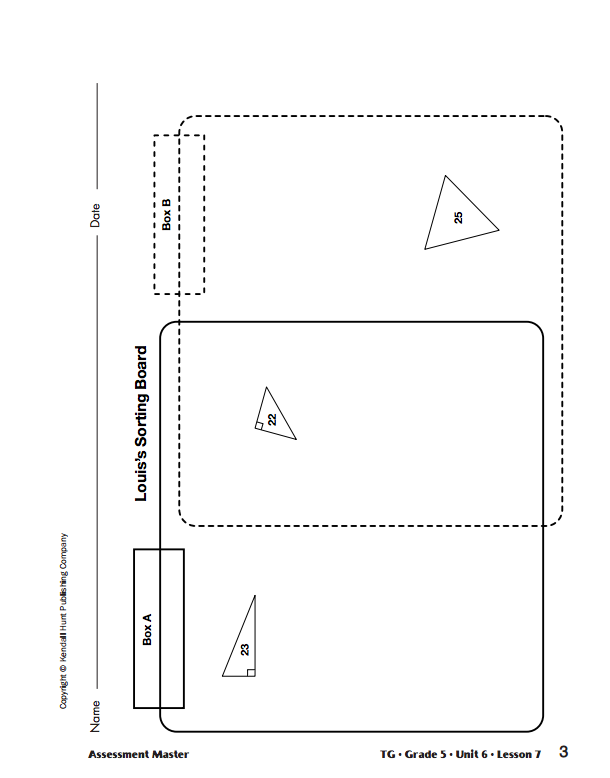After students have had time to work on their selected problems, discuss Questions 3 and 5. Ask a student to show how they sorted the shapes for each problem. Start with a student who sorted the shapes as directed in Question 3. See Figure 3.
- What properties did you use to sort the quadrilaterals? (number of parallel sides)
- Look at the shapes in Box B. Is there one name or classification for these shapes? (Yes, all these shapes are trapezoids.)
- Look at the shapes in Box A. Is there one name or classification for these shapes? (parallelograms)
- Look at the shape that is outside both Box A and Box B. Why isn't this shape in Box A or Box B? (Possible response: This shape does not have any parallel sides.)
- Can a parallelogram also be a trapezoid? (Possible response: No, a trapezoid can only have one pair of parallel sides and a parallelogram has to have two pairs of parallel sides.)
- Can a trapezoid also be a parallelogram? (Possible response: No, for the same reasons. A trapezoid can only have one pair of parallel sides and a parallelogram must have two pairs.)
- Are there other ways to sort these quadrilaterals? (Possible response: Yes. For example: I could sort by the number of congruent sides or if the shape has a right angle.)
Next have a student who answered Question 5 show how they sorted the quadrilaterals. See Figure 4.
- What properties did you use to sort the quadrilaterals? (rhombuses and rectangles)
- Look at the shapes in Box B. What properties do these shapes have in common? (All the shapes have four right angles and two pairs of parallel sides.)
- Look at the shapes in Box A. What properties do these shapes have in common? (All of these shapes have two pairs of parallel sides and all four sides are the same length or congruent.)
- Look at the shapes that are outside both Box A and Box B. Do these shapes have any properties in common? (Possible response: They have four sides.)
- Why is Shape 11 outside of both Box A and Box B? (Possible response: It does not have 4 right angles and it is not a parallelogram with sides that are the same.)
- Are all the shapes in Box A and Box B parallelograms? (Yes, they are all parallelograms because they all have two pairs of parallel sides.)
- Are all the shapes in Box A and Box B trapezoids? (No, they all have more than one pair of parallel sides.)
Assign the Louis Sorts Triangles Assessment Masters for students to complete independently.
Use the Louis Sorts Triangles Assessment Masters with the Feedback Box to assess students' abilities to identify and describe two-dimensional shapes [E4]; classify two-dimensional shapes in a hierarchy based on properties [E5]; and justify conclusions based on geometric properties [E7].

















